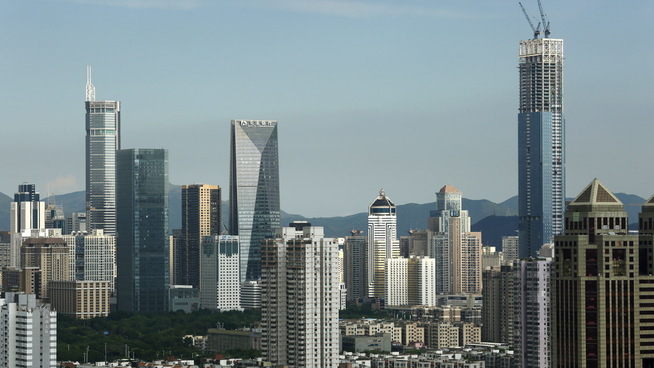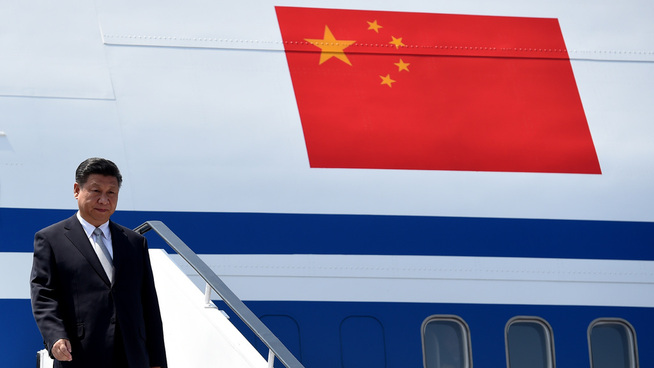Just before the clock 05.00 on Friday morning, Norwegian time, presented the chinese authorities, many macroeconomic numbers and the number most people are most concerned about, is the GDP.
China’s economy grew by 6.7 per cent in the third quarter, compared with the same period last year.
the Result was roughly in line with consensus at 6.8 per cent, and showed exactly the same growth as in the previous two quarters, as several experts point out as suspicious.
As always the GDP numbers met with some skepticism. We believe the official figures, which failed to reflect much of the sharp decline in growth as shown in our measurements in the last year, now fails to recognise a recent surge in growth, says economist Julian Evans-Pritchard at Capital Economics, in a note, according to CNBC.
China’s state statistical office NBS printer says in a statement that “We must be conscious that the economic development fremeles is in a critical period of omvendinger and upgrades.”
gross domestic Product is the value of the goods and services produced in a country. The prefix gross indicates that the calculated value of the wear and obsolescence of the overall capital formation in the country (the consumption of fixed capital) is not deducted. GDP is often used as a measure of velstandsnivået in a country.
Source: Store norske leksikon
No surprises
These important key figures were also published in China on Wednesday morning:
** industrial Production increased by 6.1 per cent in september, compared with september last year. It was in advance estimated a growth of 6.4 percent, according to Financial Times.
** Investments in fixed assets and infrastructure rose by 8.2 per cent in the period January to september, compared with the year before. This fell right on expectations.
** Retail sales increased by 10.7 per cent in september, compared with september 2015. The consensus was 10.6 per cent.

China’s richest man warns against history’s greatest bubble
the Figures showed no big surprises, as was expected of Makroøkonom Ole Andre Kjennerud, DNB Markets, that follows the development of the chinese economy closely.
– Based on developments to date in the quarter, both when it comes to bedriftsorienterte and forbruksrelaterte numbers, so I think we’ll get quite a normal development. There are neither signs of braking or improvement in the growth rate, he said to E24 on Tuesday.
In the second quarter surprised China’s GDP, but experts warned a tougher last half of the year.
Warns of hard landing
the GDP figure can reduce the chances of a hard landing for China, but several economists warn that the stabilization will not last long, according to CNBC.
The recent collection is living on borrowed time, given that it has largely been driven by faster credit growth and a boom in the housing market, which the authorities are now working to limit. While the increase as a result of political stimuli begins to decline, probably at some point early next year, persistent structural factors mean that the economy is starting to slow down again, ” says Pritchard.
He gets the support of the analysis supervisor at Rabobank in Hong Kong, Michael Every.
– It’s amazing what a housing bubble and a huge gjeldsøkning can do. This is not sustainable, but the alternative is not something anyone wants to think about, ” says Every to Bloomberg.

Economist fear China-bang: – The development goes in the wrong direction
China has begun the process of transforming the economy from a investeringsdrevet to a more forbruksdrevet economy.
the Economy of the country generally shows signs of decreasing growth, and the chinese authorities attempt to steer the country towards a more sustainable growth target. Since the government in the 70s decided that the country’s communist planned economy to open market, the country has been one of the world’s most sought-after countries for industrial production.
In 2015 the country had its lowest annual growth since 1990.
Likviditetsfelle
According to managing director at Orient Capital Research Andrew Collier, makes the discrepancy between the expected and actual industrial production, it is more likely to think that China is in a likviditetsfelle.
We as the 1.2 trillion yuan in new loans in september, a large increase, but the companies do not use the money, in spite of the authorities ‘ efforts to get state-owned companies to invest.
the Deviation of the industrial production has probably made that the australian dollar weakened slightly, writes CNBC. This is due to the fact that the australian dollar is seen as a proxy for the chinese economy, because China is Australia’s biggest trading partner.
the Case continues below the advertisement.
how To react exchanges
The chinese numbers help to lift several of the asian stock exchanges on Wednesday. To check the situation out just after the clock 06:
** the Japanese Nikkei is up 0,17 percent.
** Hong Kong stock exchange is down to 0.14 per cent.
** the stock Exchange of Singapore is upside down 0,28 per cent.
** stock Exchange in Shanghai is up 0,12 percent.
** Kospi in South Korea is up 0,27%
No comments:
Post a Comment